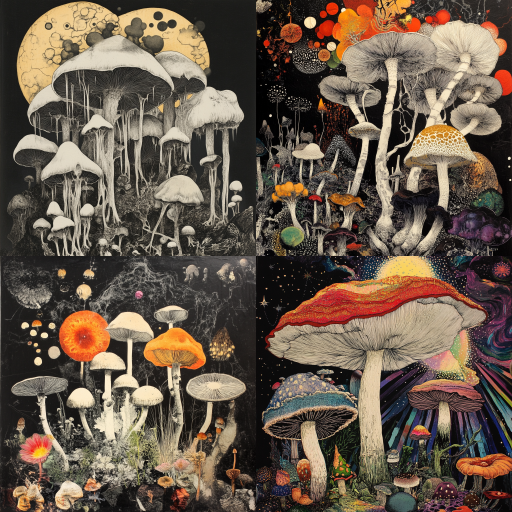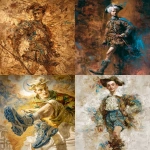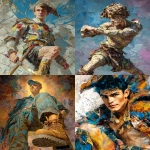Explore the Best AI Image Gallery

The Role of AI in Shaping the Future of Graphic Design
Artificial Intelligence (AI) is no longer just a buzzword in the tech industry; it has firmly established its presence in the creative realms of graphic design. By leveraging machine learning algorithms and complex data analysis, designers are finding new ways to enhance their creativity and streamline their workflows. This blog post delves into the multifaceted impact of AI in graphic design, exploring its potential uses, ethical considerations, and what the future might hold.
Enhancing Creativity
One of the most significant impacts of AI in graphic design is its ability to enhance creativity. Tools powered by AI can analyze vast datasets, learn from past designs, and generate unique creative concepts. For instance, platforms like Canva and Adobe Sensei utilize AI to suggest design templates, color schemes, and layouts based on current trends and the user's past choices. This feature allows designers to experiment with new ideas quickly and access inspiration from millions of sources.
Streamlining Workflows
AI also plays a pivotal role in streamlining workflows within the graphic design industry. Tasks that were once tedious and time-consuming, such as resizing images, adjusting color palettes, or applying filters, can now be automated using AI tools. For example, AI-based software like remove.bg can remove backgrounds from images in seconds, saving designers an immense amount of time that can be better spent on conceptual development and execution. This automation of repetitive tasks leads to heightened efficiency and increased productivity among design teams.
Potential Uses of AI in Graphic Design
AI's potential applications in graphic design are vast and varied. Here are a few key uses that are redefining the industry:
- Image Generation: AI tools can now create original images based on textual prompts, allowing designers to generate unique visuals that complement their projects.
- Personalization: By analyzing user data, AI can tailor designs to individual tastes, ensuring that marketing materials resonate with their intended audience.
- Accessibility: AI can help make graphic design more accessible to non-designers by providing AI-assisted tools that simplify the design process, democratizing creativity.
- Quality Control: AI can sift through designs, flagging inconsistencies and providing immediate feedback, which aids in maintaining standards across projects.
Ethical Considerations
While the integration of AI in graphic design offers many benefits, it also raises a host of ethical concerns. One major issue revolves around copyright. AI-generated designs could potentially infringe on existing works without proper credit, leading to legal challenges. Furthermore, there is an ongoing debate regarding the value of human creativity versus machine-generated content. Some worry that reliance on AI could diminish the role of the designer, reducing the importance of unique, human creativity in favor of mass-produced designs.
Future Trends
As technology continues to advance, we can expect AI to play an even more crucial role in the future of graphic design. Here are a few trends to watch out for:
- Integration with Virtual Reality (VR) and Augmented Reality (AR): Designers will begin using AI in tandem with VR and AR to create immersive and interactive experiences.
- Collaborative AI: Future AI tools will likely foster greater collaboration between designers and machines, where AI becomes a creative partner rather than just a tool.
- AI Trend Prediction: As AI becomes more sophisticated, it will be able to predict design trends far in advance, allowing designers to stay ahead of the curve.
- Sustainability Focus: AI will help in creating designs that prioritize sustainability, optimizing resources during the design process to reduce waste.
Conclusion
The impact of AI on graphic design is profound and multifaceted. While it enhances creativity and streamlines workflows, it also prompts important ethical discussions that the industry must address. As we move forward, the collaboration between AI and human designers promises to unlock unprecedented levels of creativity, opening new avenues for innovation in graphic design. Embracing AI as a partner in the design process, rather than a replacement, may be the key to a flourishing creative future.





](https://images.ai-img.art/thumbnails/150/8c3bd422d50d35735d8fb33bd314a79e30e5b150129d5d09bdad822a2007593f.webp)





](https://images.ai-img.art/thumbnails/150/1614d64dd7156c95db952258978be809eb3db8cea4453fec69c49cbdfe63fa94.webp)
](https://images.ai-img.art/thumbnails/150/3a60737a5b67fa252207ad1ae6db245a26284f53fb5846996bb34515b39ff269.webp)